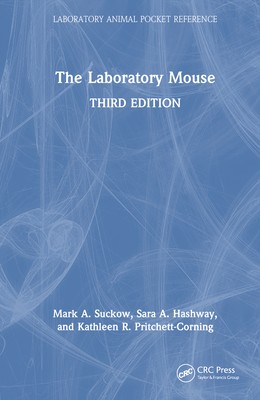
- We will send in 10–14 business days.
- Author: Mark A Suckow
- Publisher: CRC Press
- ISBN-10: 1032416858
- ISBN-13: 9781032416854
- Format: 15.2 x 22.9 x 1.6 cm, hardcover
- Language: English
- SAVE -10% with code: EXTRA
Reviews
Description
With the advent of transgenic and other genetic engineering technologies, the versatility and usefulness of the mouse as a model in biomedical research has soared. Revised to reflect advances since the second edition, The Laboratory Mouse continues to be the most accessible reference on the biology and care of the mouse in research settings.
This guide presents basic information and common procedures in detail to provide a quick reference source for investigators, technicians, and caretakers on the humane care and use of the mouse. The new edition adds information on novel technologies such as CRISPR-Cas and on housing systems and management practices; it covers new concepts such as pain assessment by facial expression and the importance of nest-building as an assessment tool of well-being. There are now expanded sections on anesthesia and analgesia, and on behavior and enrichment.
An ideal quick reference for investigators, technicians, and animal caretakers charged with the care and/or use of mice in a research setting, this book will be particularly valuable to those new to working with mice who need to start research programs using these animals.
EXTRA 10 % discount with code: EXTRA
The promotion ends in 17d.05:39:01
The discount code is valid when purchasing from 10 €. Discounts do not stack.
- Author: Mark A Suckow
- Publisher: CRC Press
- ISBN-10: 1032416858
- ISBN-13: 9781032416854
- Format: 15.2 x 22.9 x 1.6 cm, hardcover
- Language: English English
With the advent of transgenic and other genetic engineering technologies, the versatility and usefulness of the mouse as a model in biomedical research has soared. Revised to reflect advances since the second edition, The Laboratory Mouse continues to be the most accessible reference on the biology and care of the mouse in research settings.
This guide presents basic information and common procedures in detail to provide a quick reference source for investigators, technicians, and caretakers on the humane care and use of the mouse. The new edition adds information on novel technologies such as CRISPR-Cas and on housing systems and management practices; it covers new concepts such as pain assessment by facial expression and the importance of nest-building as an assessment tool of well-being. There are now expanded sections on anesthesia and analgesia, and on behavior and enrichment.
An ideal quick reference for investigators, technicians, and animal caretakers charged with the care and/or use of mice in a research setting, this book will be particularly valuable to those new to working with mice who need to start research programs using these animals.


Reviews